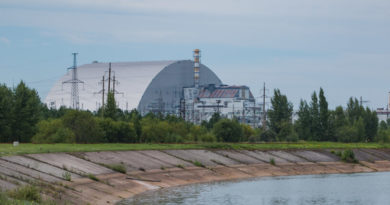Renewables, Low-Carbon Solutions Must Augment From 12% of Energy Supply in ’21 to 50%-70% by 2050
 Renewables, Low-Carbon Solutions Must Augment From 12% of Energy Supply in '21 to 50%-70% by 2050
Renewables, Low-Carbon Solutions Must Augment From 12% of Energy Supply in '21 to 50%-70% by 2050
A new publication by Boston Consulting Group (BCG) Center for Energy Impact, ‘The Energy Transition Blueprint” has indicated that as per industry standard models, renewables and other low-carbon solutions must augment from 12% of the energy supply in 2021 to 50%-70% by 2050. This is important to curb global warming to 1.5°C above preindustrial levels. This is around three times faster than previous transitions, for example to coal and to hydrocarbons.
The cumulative world consumption of electricity is estimated to increase by twice by 2050. Over 775 million people in the world are deprived of electricity until this day.
How Societies Can Keep Up
Further, societies need over 20 MWh of primary energy per capita. To keep up with competing demands, society must significantly increase substitution and abatement of fossil fuel use. Five technology levers can allow us to achieve our targets in the transition: increasing energy efficiency; electrifying end uses, via, for example, electric vehicles or heat pumps; decarbonizing the power supply; using lower carbon fuels in hard-to-abate use cases; and deploying carbon capture.
“Most of the tools we need to bring our energy system to net zero are already available,” said Maurice Berns, a BCG managing Director and Senior Partner, who chairs the Center for Energy Impact and coauthored the report. “What we need, urgently, are the policies, proven business cases, and capabilities to effect the biggest and most critical peacetime transformation in our economic history.”
A Significant Investment Gap
$37 trillion worth of investment is needed by decade end to finance energy transition. A maximum of $19 trillion is committed already, with an investment gap of $18 trillion. We need as much investment in the electric grid, as we do in new solar and wind capacity, to avoid generating low-carbon power that is stranded while the grid catches up. At the same time, oil and gas must be phased down rapidly.
What to Expect
The report states that the economics of our energy systems will change due to the transition. Energy will shift from an extracted to a manufactured resource, necessitating much heavier upfront investment but lower operating costs. This will complement a material rise in price volatility and energy storage continues to be a challenge with the energy mix shifting from fossil fuels to electricity and hydrogen. As of now, there is capacity to store just one to two hours of average electricity consumption in Europe and the US.
In addition, electricity market design will need an important overhaul, to address the challenge of cyclicality, increasing volatility, and uncertainty in energy markets. Energy transport costs will also increase significantly due to the energy mix change, which is likely to lead to global industry production centers re-locating to where energy is less costly.
“A significant acceleration of the green energy transition is essential to maintaining a livable planet for today and for future generations,” said Patrick Herhold, a BCG Managing Director and Senior Partner, and a Coauthor of the report. “As for any transformation, the challenges and disruption it comes with should not be underestimated. However, it also offers tremendous opportunities; in the long-run, a largely green energy system can resolve today’s energy trilemma around energy sustainability, affordability, and security.”




